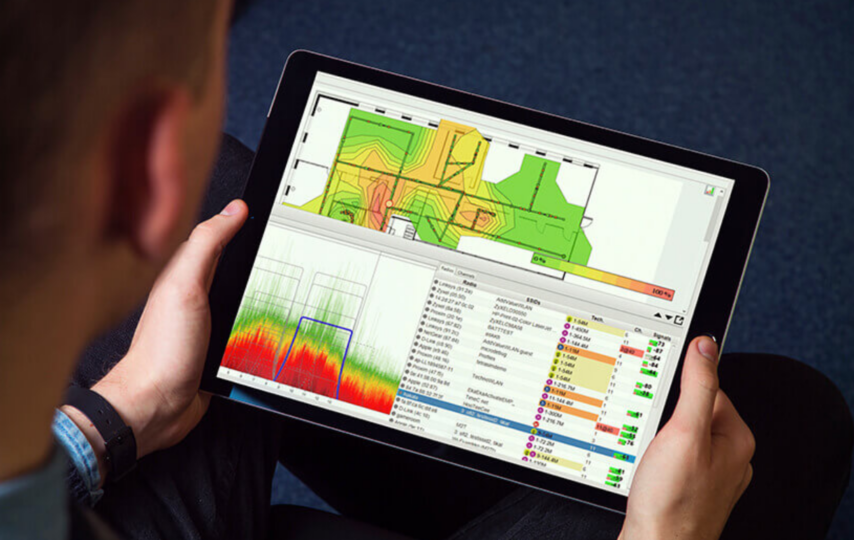Wireless technology has significantly transformed how we interact with the digital world. However, to fully reap the benefits, it’s essential to understand and optimize the Radio Frequency (RF) behavior of your wireless network. This is where a Wireless Site Survey comes into play.
A Wireless Site Survey involves the study of a specific location to ensure optimal performance for a wireless network. But why is it necessary, and how does it work? Let’s delve into the fascinating world of Wireless Site Surveys to find out.
The Necessity of Wireless Site Surveys
Wireless Site Surveys are integral for creating efficient wireless networks. By understanding the RF behavior of a site, you can optimize wireless coverage, improve network performance, and minimize the use of unnecessary equipment. This approach is cost-effective, time-saving, and guarantees optimal network efficiency.
Importance of Understanding RF Behavior
RF behavior can be quite unpredictable. Various physical structures, existing radio sources, and even people can interfere with the radio signal profile of a site. By conducting a Wireless Site Survey, we can gain crucial information about signal interferences, weak signal areas, and dead zones. This information is invaluable when deploying a wireless network that meets your specific needs within the constraints of your site.
Economic and Performance Advantages
Undertaking a Wireless Site Survey might seem like a significant upfront cost, but it’s a strategic investment. It reduces the time, manpower, and equipment needed for network deployment, ensuring you get the best performance out of the minimal equipment. Moreover, it helps in eliminating the guesswork and potential issues that might crop up in the future.
Wireless Site Surveys: Smaller vs Larger Deployments
The size of your deployment significantly influences whether you’ll need a site survey.
Smaller Deployments
For smaller wireless deployments, ad-hoc placement of WiFi Access Points (APs) might suffice, though a site survey is always beneficial.
Larger Deployments
For medium to large-scale wireless deployments, a Wireless Site Survey isn’t just recommended – it’s a necessity. In these scenarios, ad-hoc placement of APs can lead to interference, overlap, and less-than-optimal coverage. A Wireless Site Survey provides a comprehensive blueprint for AP placement, ensuring effective coverage and mitigating interference.
The Role of Wireless Site Surveys
Wireless Site Surveys play a significant role in planning, designing, and optimizing wireless networks. They help identify potential issues, provide detailed data on site-specific RF behavior, and help plan efficient network designs.
Preventing and Managing Interference
Wireless Site Surveys are crucial in detecting areas of potential interference. They provide insights on co-channel interference, external radio interferences, and potential problem areas. They also offer recommendations for AP placement to minimize interference and optimize coverage.
Site’s Radio Signal Profile Changes
A Wireless Site Survey provides a snapshot of the site’s RF environment at the time of the survey. However, as the site evolves – with new furniture, electronic equipment, or structural changes – the RF environment also changes. A periodic Wireless Site Survey can help you keep up with these changes and adapt your wireless network accordingly.
Understanding WiFi Standards for Site Surveys
It’s important to understand that different WiFi standards have different capabilities and constraints. The most common standards include 802.11a, 802.11b, 802.11g, 802.11n, and 802.11ac. A comprehensive Wireless Site Survey should consider all these standards to ensure full coverage and compatibility.
Different Types of Wireless Site Surveys
There are three primary types of Wireless Site Surveys – passive, active, and predictive.
Passive Surveys
In a passive survey, the tool listens to existing APs and other signal sources to determine signal strength, interference, and AP coverage. It’s often performed when upgrading existing wireless networks.
Active Surveys
In an active survey, the survey WiFi adapter is associated with the APs, providing detailed information on network traffic, throughput packet loss, and data rates. It’s usually performed in conjunction with a passive site survey during a new network deployment.
Predictive Surveys
Predictive surveys use RF planning software tools to predict the wireless coverage of APs without field measurements. They are often used when the site or building is not yet built and can be helpful for budgeting purposes.
Key Elements to Consider in a Wireless Site Survey
Conducting a Wireless Site Survey requires consideration of several key elements, including potential areas of interference, AP placements, power considerations, and wiring requirements. A well-executed survey will provide all this information and more, equipping you with the tools you need to design, implement, and optimize your wireless network.
Overview of Wireless Site Survey Tools
There are several wireless site survey tools available, ranging from robust paid software to free solutions. They all provide varying degrees of capabilities. Some of the industry-leading tools include AIRMAGNET, EKAHAU SITE SURVEY, VISIWAVE SITE SURVEY, MERITECH WIFI NETWORK SURVEY AND DESIGN, METAGEEK, and NUTS ABOUT NETS.
For cost-effective or initial survey needs, free tools such as Heatmapper, Kismet, NetSurveyor, and WiFi Analyzer can provide basic insight into your wireless environment.
Case Study: Successful Wireless Site Surveys
Real-world case studies can demonstrate the power of Wireless Site Surveys. For instance, a school district was experiencing severe network performance issues after deploying a wireless network based on vendor recommendations. A post-deployment Wireless Site Survey revealed several areas of co-channel interference and weak signal coverage. By acting on the survey results and repositioning the APs, they were able to dramatically improve network performance and user satisfaction.
If you’re considering getting a professional WiFi design network or a comprehensive WiFi survey of your current setup, the expert team of engineers at GATN come highly recommended. With their extensive knowledge and years of experience, they provide high-quality services, ensuring your wireless networks are optimally designed and efficiently functioning.
Their meticulous approach to Wireless Site Surveys and network design means you can expect thorough assessments and precise recommendations, guaranteeing a robust, efficient, and future-proof wireless network. From small-scale deployments to complex, large-scale projects, the GATN team’s commitment to excellence makes them a reliable partner in your wireless network journey.
Looking to the Future: Evolving WiFi Standards and Site Surveys
Wireless technology is continually evolving, with new standards such as 802.11ax (WiFi 6) and 802.11be (WiFi 7) on the horizon. These new standards will demand more sophisticated site surveys. Therefore, keeping up with these changes is essential to maintain optimal network performance and coverage.
Conclusion
Wireless Site Surveys are indispensable in today’s wireless-centric world. They provide crucial insights into RF environments, assist in optimal network design, and save cost and time on unnecessary equipment. Whether you are deploying a small home network or a large-scale corporate network, a Wireless Site Survey should be your first step towards a robust and efficient wireless network.
Frequently Asked Questions
Q1. What is a Wireless Site Survey?
A Wireless Site Survey is a process that involves studying a specific location to ensure optimal performance for a wireless network.
Q2. Why are Wireless Site Surveys important?
Wireless Site Surveys are important because they help in understanding the RF behavior in a location, identify areas of potential interference, help in optimal placement of access points, and ultimately, aid in setting up an efficient wireless network.
Q3. What are the different types of Wireless Site Surveys?
The three main types of Wireless Site Surveys are passive, active, and predictive surveys.
Q4. What tools are used for Wireless Site Surveys?
Several tools are used for Wireless Site Surveys, such as AIRMAGNET, EKAHAU SITE SURVEY, VISIWAVE SITE SURVEY, and more. There are also free tools available like Heatmapper and NetSurveyor.
Q5. How often should a Wireless Site Survey be conducted?
The frequency of a Wireless Site Survey depends on the changes in your RF environment. If the physical environment or the wireless needs of the users change, a new site survey is recommended.







